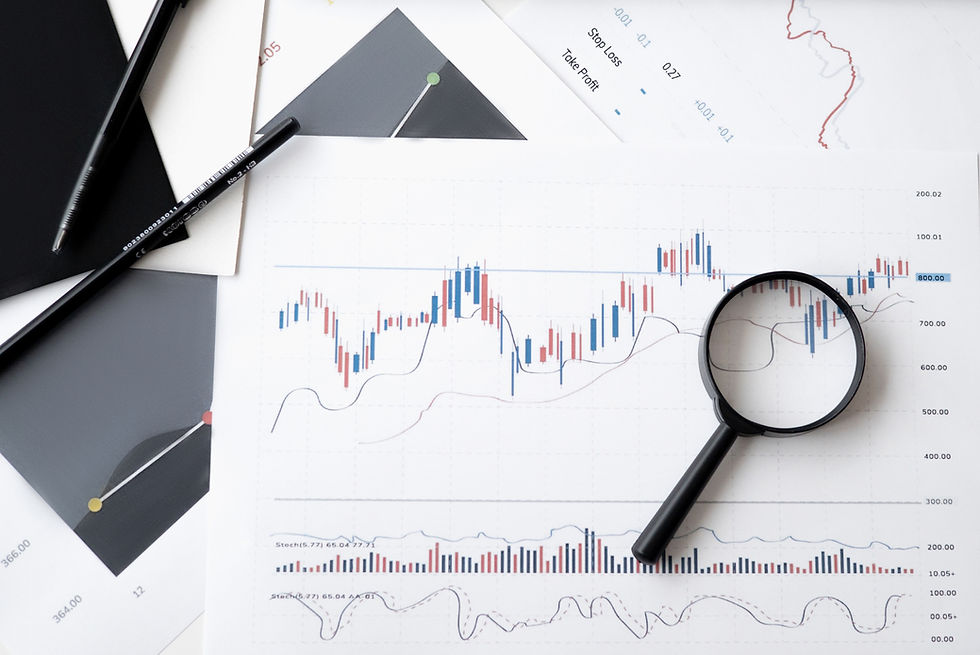Blog 2 – Good Behavior is a Superpower!
- Jay Mason

- Jan 13, 2024
- 3 min read
Updated: Oct 29

Why Most Investors Underperform (And What To Do About It)
Decades of research confirm an uncomfortable truth: only a small percentage of investors—retail or professional—beat the market over time.
Consider the evidence:
📊 The 2023 Dalbar Study shows the average investor trailed the S&P 500 by approximately 2% annually over 30 years.
📉 Professors Brad Barber and Terrance Odean found that 75% of day traders quit within two years.
💼 The SPIVA report reveals that 95% of professional fund managers underperformed the same index over 20 years.
These aren't outliers. They're the norm.

Figure 1 — Retail vs. S&P 500 Returns (Dalbar, 2023)
Why Professionals Struggle
Professional underperformance is often structural. Management fees and operating expenses erode returns before investors see them. But the deeper constraint is corporate policy—most institutions restrict portfolio managers to narrow strategies like security selection or sector weighting. These limitations make generating meaningful alpha extremely difficult.
Why Retail Investors Struggle
Retail investors may avoid professional fees, but their underperformance is primarily behavioral. The "Behavior Gap" describes how emotions, overconfidence, and timing errors destroy returns more effectively than any fee structure. In Figure 2, the difference between investing and gambling only begins to show up over longer time periods. This is why so many investors tend to dismiss investing into the stock market as one big gamble. Investing requires patience.

Figure 2 — “Decision-Making for Investors” (Michael Mauboussin, Legg Mason)
Barber and Odean identified recurring behavioral flaws:
Overconfidence – Frequent trading reduces returns. Single males traded 67% more than single females, earning 1.4% less on average.
Market Timing – Buying peaks and selling troughs amplifies losses. Fund flow data (Figure 3) consistently proves that investors divest exactly when they should be investing.
Stubbornness – Cutting winners too early while holding losers too long.
Herd Mentality – FOMO-driven decisions create volatility that disciplined investors exploit.
Execution Errors – Mobile trading encourages impulsive, poorly researched moves.

Figure 3 – Investors Buy High / Sell Low (PIMCO)
Volatility Isn't Risk
Fear and volatility travel together, but they're not the same thing. Market swings create temporary pain but also permanent opportunity. Those who stay disciplined are rewarded by those who react emotionally.
As Jack Bogle wisely stated: "Don't do something. Just stand there."
A Full-Brain Approach
Consistently successful investing requires both hemispheres:
🧠 Left brain – Rational structure, diversification, valuation
💡 Right brain – Behavioral control, patience, conviction
In the Oasis Growth Fund, these principles are integrated into a four-tiered contrarian strategy focused on quality compounders and disciplined trading. The goal isn't to outsmart the market—it's to out-strategize it through deliberate structure.
“Don’t do something. Just stand there.” — Jack Bogle
TRUST IS KEY
To act contrarian requires faith in four things:
Your stock selection process (quality)
Your portfolio design (diversified)
Your risk protection plan (not timing)
The market’s long-term recovery
The greater the queasiness, the greater the opportunity.
GIVE YOURSELF A FIGHTING CHANCE
Neutralize the Environment
Trade in a calm, focused space.
Avoid multiple screens and real-time noise.
Reduce phone trading.
Introduce accountability through peer or advisor review.
Neutralize the Emotions
Limit stimulants (yes, coffee too).
Avoid hype-driven punditry.
Use a trade checklist, embrace your inner contrarian, meditate, and forgive trading mistakes.
Neutralize the Portfolio
Prepare for uncertainty.
Use Stop-Loss or Trailing Stop orders.
Pre-set trades and harvest cash regularly.
“Regret is an appalling waste of energy. It’s only good for wallowing in.” ~ Katherine Mansfield (1888–1923)
The Bottom Line
Underperformance isn't a lack of intelligence—it's a combination of simple measures within our control. Better results come from having a plan, using self constraint and learning from our mistakes.
“The difference between successful people and really successful people is that really successful people say no more often". ~ Warren B.
Discipline is the superpower.
RESOURCES
[1] Barber, B.M. & Odean, T. “Do Day Traders Rationally Learn About Their Ability?” (2010)
[2] Barber, B.M. & Odean, T. “Trading Is Hazardous to Your Wealth”
[3] “The Average Investor Is His Own Worst Enemy.” Forbes (2010)
[5] eVestment, “State of Institutional Fees Report,” (2020)[6] Richards, Carl. The Behavior Gap (2012)
AUTHOR
Jay T. Mason, CFA, CFP manages the Oasis Growth Fund, Series O of Fieldhouse Pro Funds Inc., and is the author of “The Investing Oasis: Contrarian Treasures in the Capital Markets Desert.”

______________________________
The Oasis Growth Fund is Series O of the Fieldhouse Pro Funds Inc trust series available by Offering Memorandum in Canada through select Financial Advisors. This education series is not intended as a solicitation for investment in the Oasis Growth Fund nor is it sponsored by Fieldhouse Capital Management Inc.




Comments